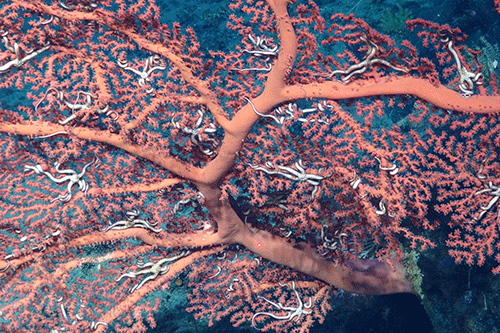Around 18,000-11,000 years ago, the Earth’s climate system experienced a dramatic shift: a period known to paleoclimate scientists as the last deglaciation. During this period, atmospheric CO2 concentration increased by ~80 parts per million (ppm), accompanied by sea level rise of almost 120 metres due to ice sheet melting and global warming.
Recent high-resolution ice core CO2 records have revealed that there were three abrupt centennial-scale atmospheric CO2 increases of ~10 ppm superimposed on the more gradual millennial-scale deglacial CO2 rise. The second and third of these events also coincided with abrupt warming of the high latitude North Atlantic region.
The rate of Atlantic Meridional Overturning Circulation – that is, the deep water formation in the high latitudes and associated upwelling – is closely related to the temperature of the North Atlantic region and thus might also be related to these CO2 releasing events. However it has been remarkably hard to find marine archives that can show how deep oceans behave on rapid timescales.
Researchers from the University of Bristol, University of St Andrews and University of California Irvine tackled this problem using radiocarbon measured in deep-sea fossil corals. The corals were recovered by scientific research expeditions to the Equatorial Atlantic and Southern Ocean, funded by the European Research Council and the US National Science Foundation.
Fossil corals have the unique advantage that they can be precisely dated by radiometric uranium-series dating, giving an age scale that can be directly compared to the ice core records. Radiocarbon is introduced into the ocean at the surface and penetrates to deeper layers through deep water formation. During this process radiocarbon decays away, so that deep-sea radiocarbon – and, therefore, the reconstructed fossil coral radiocarbon – can provide information on the past strength of deep ocean circulation.
The measurements revealed two massive transient events where the water becomes homogenized and enriched in radiocarbon in the mid-depth equatorial Atlantic and the Drake Passage, in phase with the second two abrupt increases of the atmosphere CO2 concentration during the last deglaciation.
Lead author, Dr Tianyu Chen of Bristol’s School of Earth Sciences said: “Our radiocarbon data are consistent with two transient and enhanced deep Atlantic overturning events which flushed out respired carbon in the deep water, causing a rapid rise of atmosphere CO2 concentration and abrupt warming of the high latitude North Atlantic.”
For more information and images see this TEDx talk by expedition leader Laura Robinson:
Paper
‘Synchronous Centennial Abrupt Events in the Ocean and Atmosphere during the Last Deglaciation’ by Tianyu Chen, Laura F. Robinson, Andrea Burke, John Southon, Peter Spooner, Paul J. Morris and Hong Chin Ng in Science

